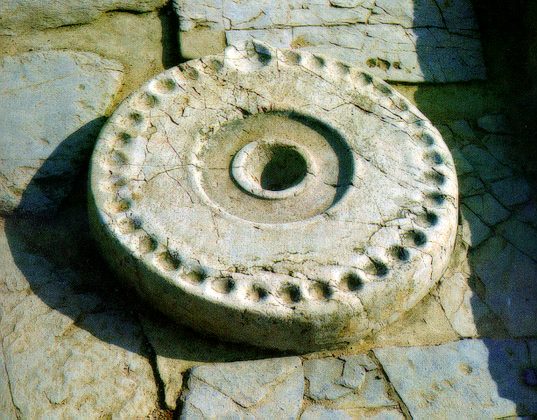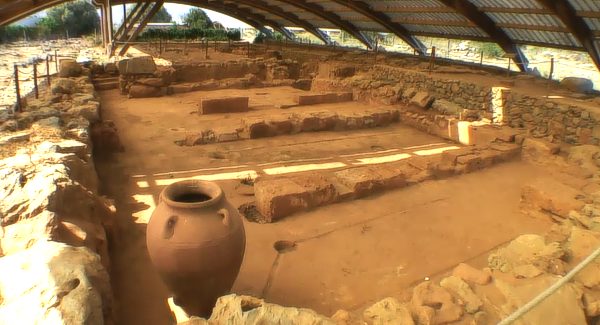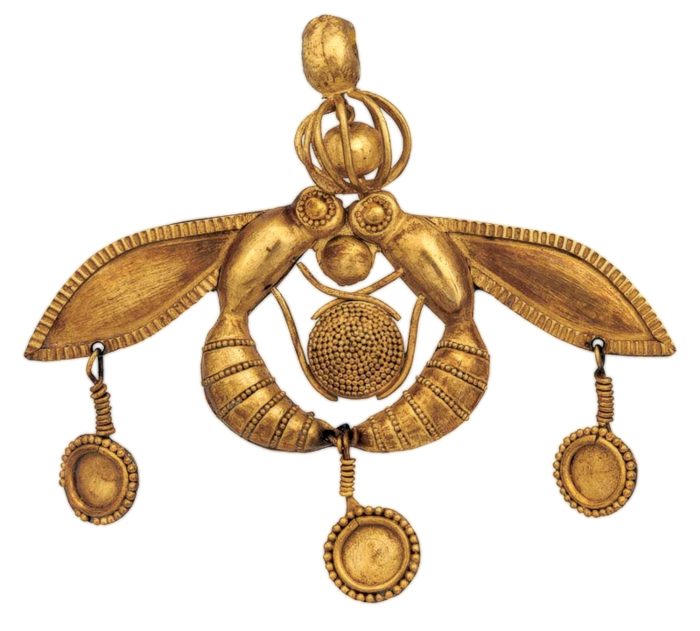The
Minoan Palace and the archaeological site of Malia are located 3 km East of the town of Malia.
From the architectural point of view the Palace of Malia, is the third- largest of the Minoan Palaces and is considered the most "provincial" of them.
It covered an area of 7,500 sq.m. and according to tradition the third son of Zeus and Europa,
Sarpedon, brother of the legendary
king Minos, ruled here.
The Palace had two floors and its entrance is from the western paved Court, through a procession passage.
It is a building with a central court, loggia, theatre, sanctuaries, Royal quarters, workshops and magazines.
North of the western court is the hypostyle crypt, discovered recently, and protected from the weather conditions by a modern roof. The large underground room, whose ceiling was supported by columns, is considered as a council chamber for the political deliberations of the local lords, separated from the dwelling quarters and the official buildings. Its a forebear of the classical Greek Pritaneion, which had a similar function.
History
The site was inhabited in the Neolithic and early Minoan period (6000- 2000 BC), but very little trace remain.
The first Palace was built in 1900 BC and destroyed in 1700 BC when a new Palace was built. Following the fate of the other palaces in Crete it was also destroyed in 1450 BC. and the present ruins are mainly those of the new palace.
The excavations at Malia were begun in 1915 by J. Chatzidakis and were continued by the French Archaeological School. The Palace, houses in the town and the cemetery at Chryssolakos have already been excavated. The finds are exhibited in the Museum of Herakleion, and some in the Museum of Aghios Nikolaos.
more on history
The most important monuments of the site are:
At the south west part of the central court is located a round table, with little cavities around the edge and a bigger at the center, standing on a base.
This table is believed to be a kind of kernos of the classic Greece. In the cavities the Minoans put the seeds, offering to the god, so they wished to have a fruitful crop.
This explanation seems more probable as this custom still exists in Crete.

Kernos
At the east side of the central court, with a pillared portico, was the palace's eastern entrance near which there ware the rooms of the royal treasury. On the same side was a raw of Magazines, narrow cells leading off a communal corridor and occupied by pithoi (jars) standing on bases, with an arrangement for gathering liquids (channels and vases for oil and wine.)

The Magazines
About 500 m north of the palace was the necropolis, a royal burial enclosure, certainly belonging to the lords of Malia, surrounded on all four sides by leveled areas and perhaps by porticoes.
Here was found the famous Bee pendant which is now on display at the Iraklion Museum.
This pendant is in the shape of two bees, or wasps, storing away a drop of honey in a comb.

The Golden bee pendant
The famous gold jewel with the bees. Consists of two bees holding a piece of honeycomb between their lehs, a filigree `cage` containing a gold bead balanced on their heads and little dosks hanging down from their wing and sting. An exquisite example of Minoan goldwork, it combines hamering, filigree and granulation.
From the necropolis of Malia (1800 - 1700 B.C.) - Heraklion Museum.
The ancient cemetery is located at a place named Chryssolakkos a name that means the "pit of gold" because of the precious objects that the farmers used to find there.